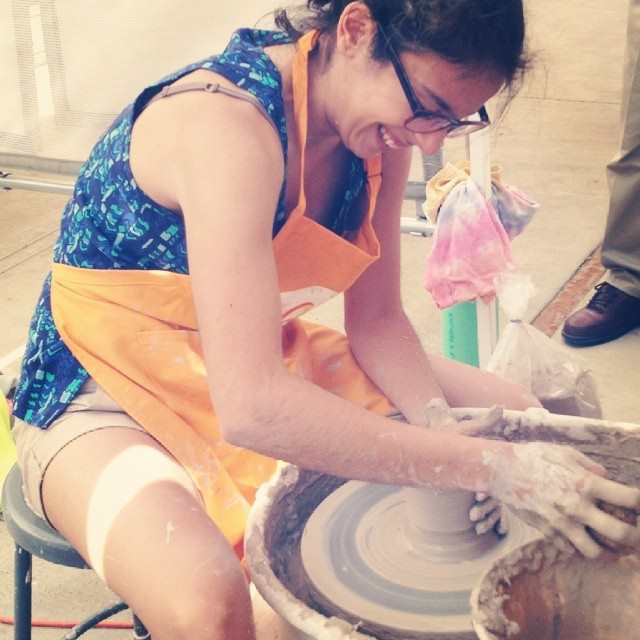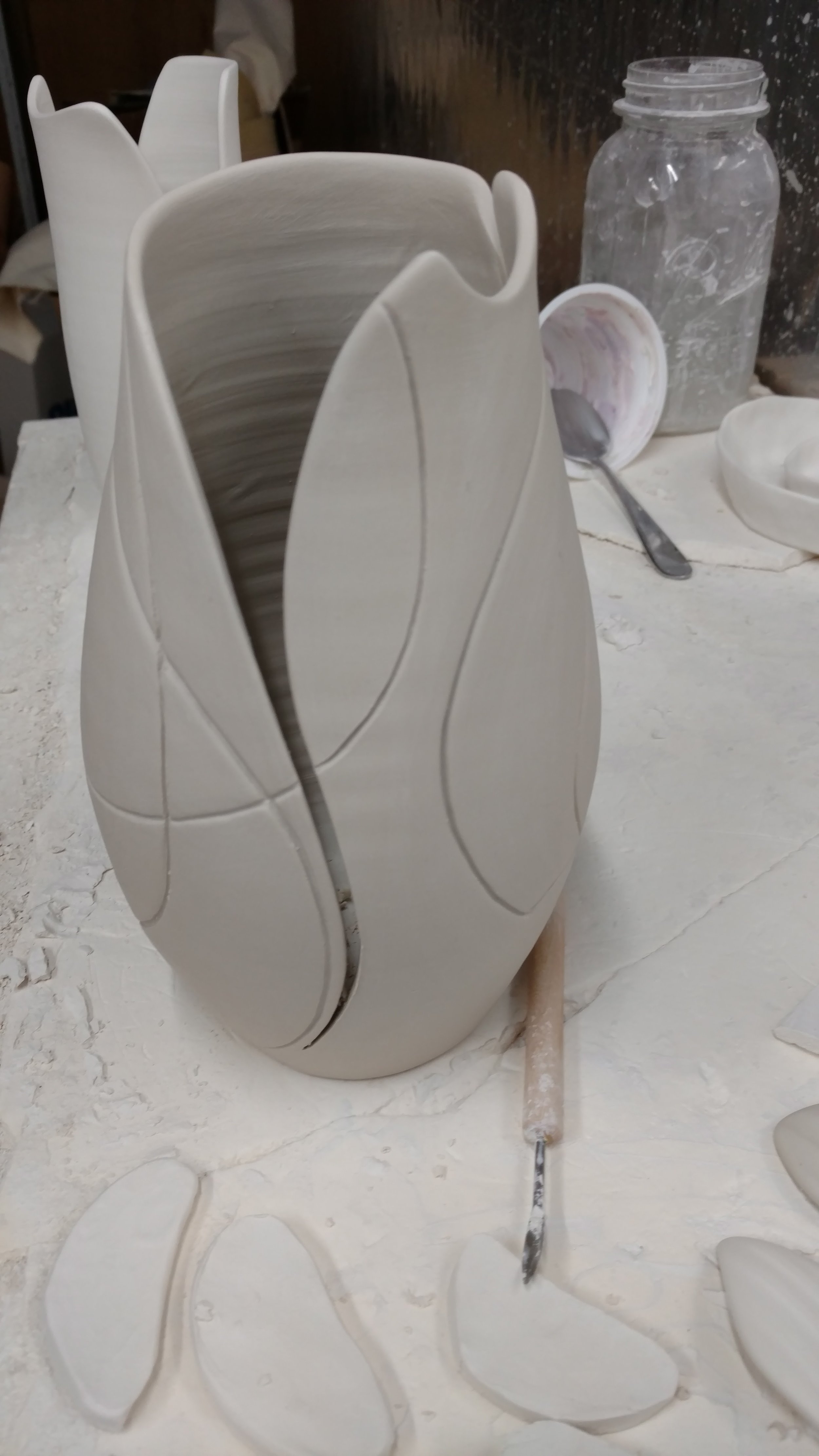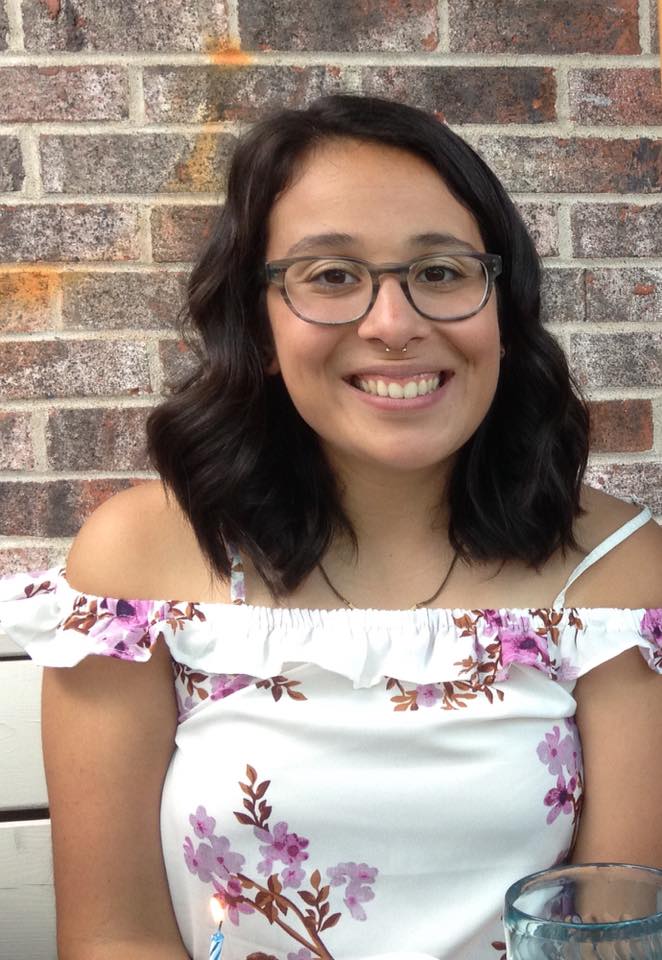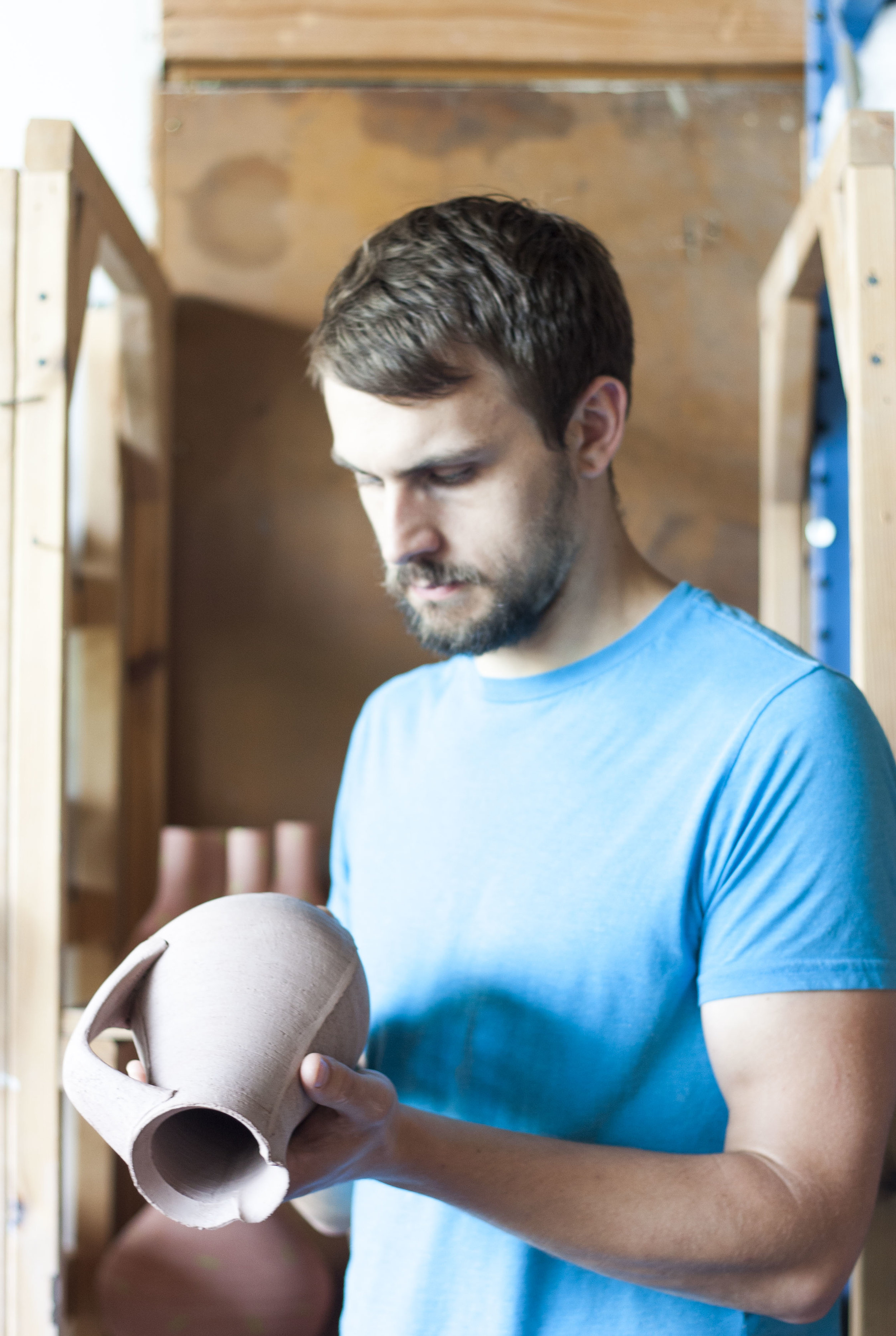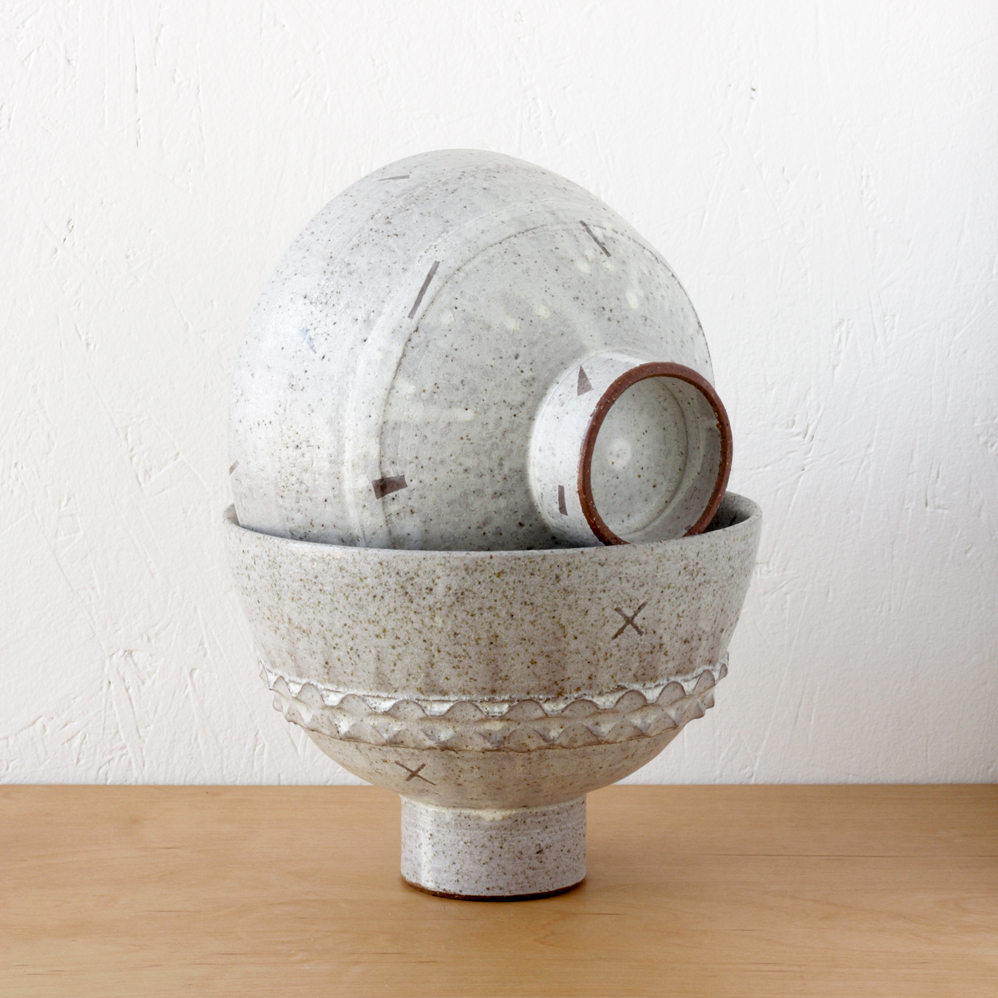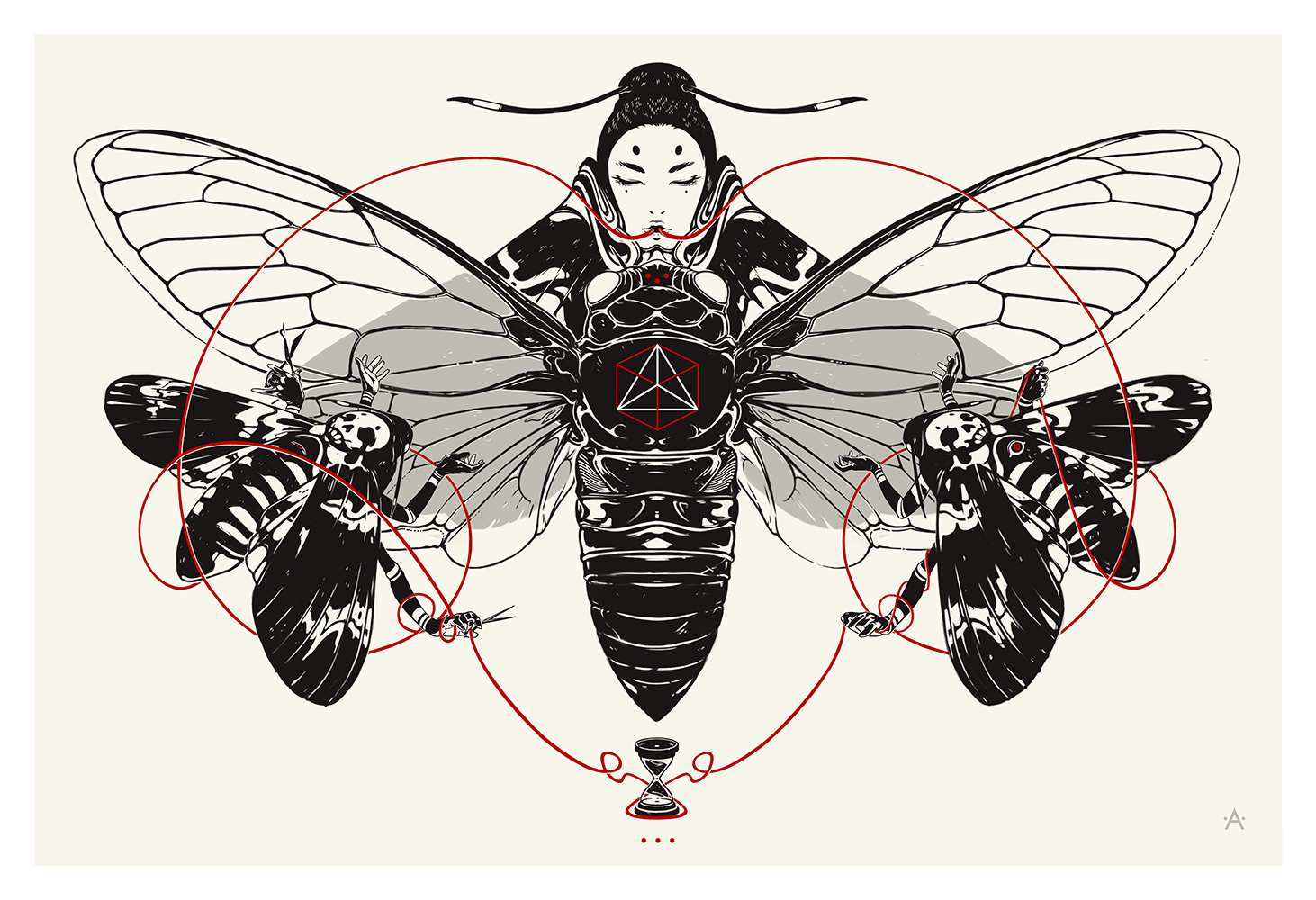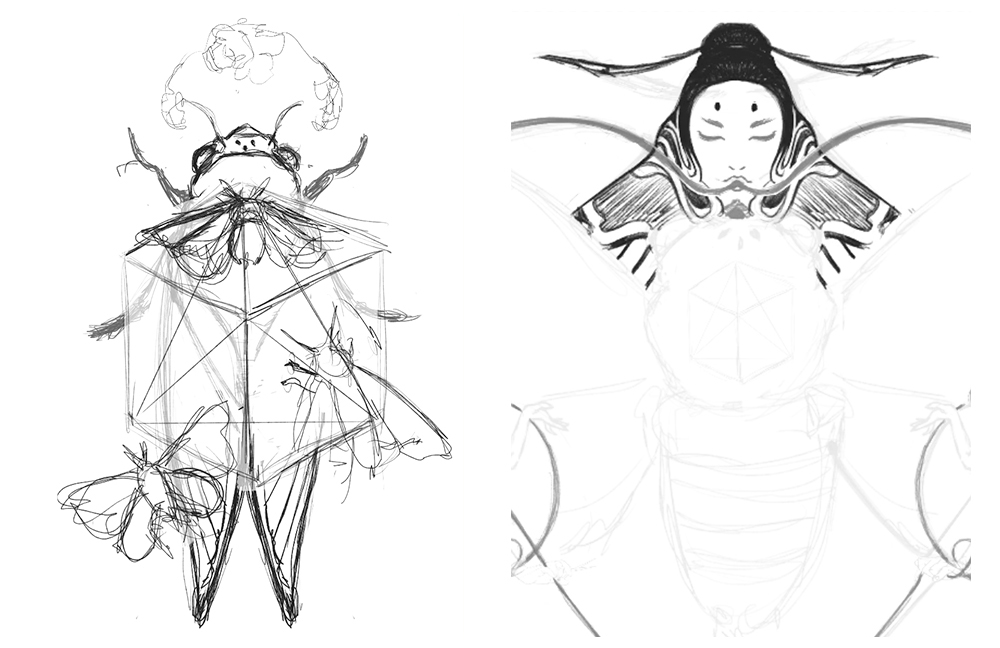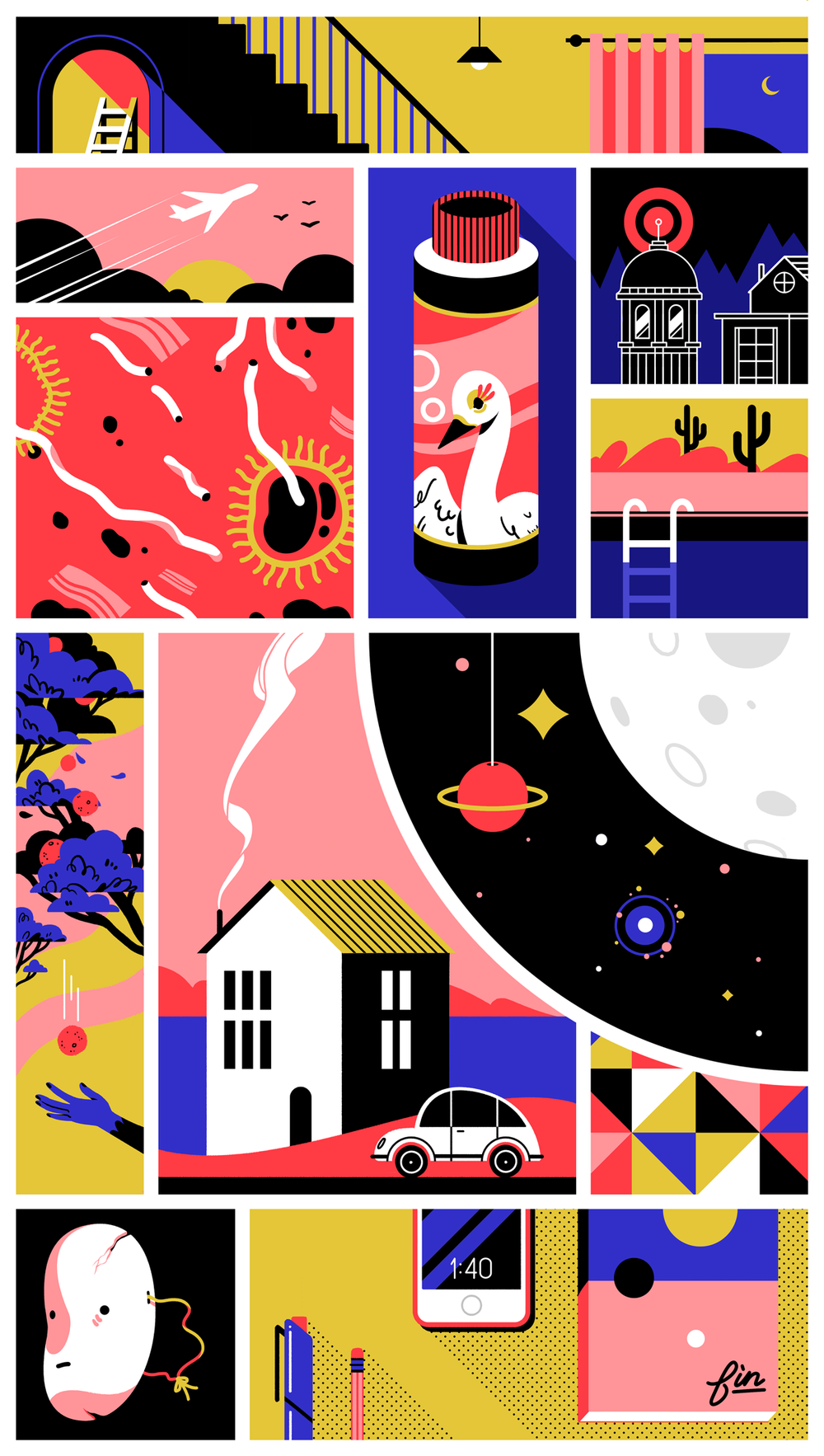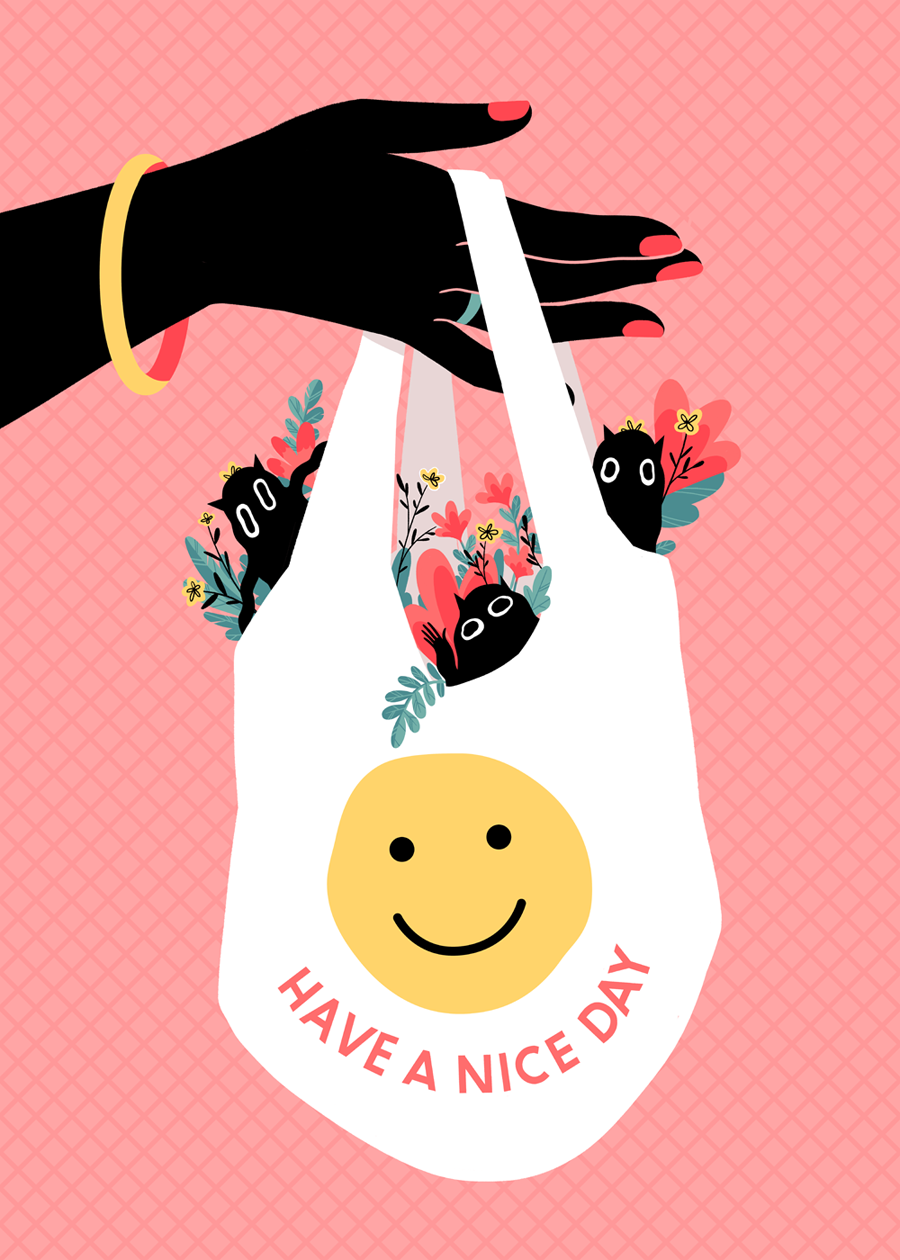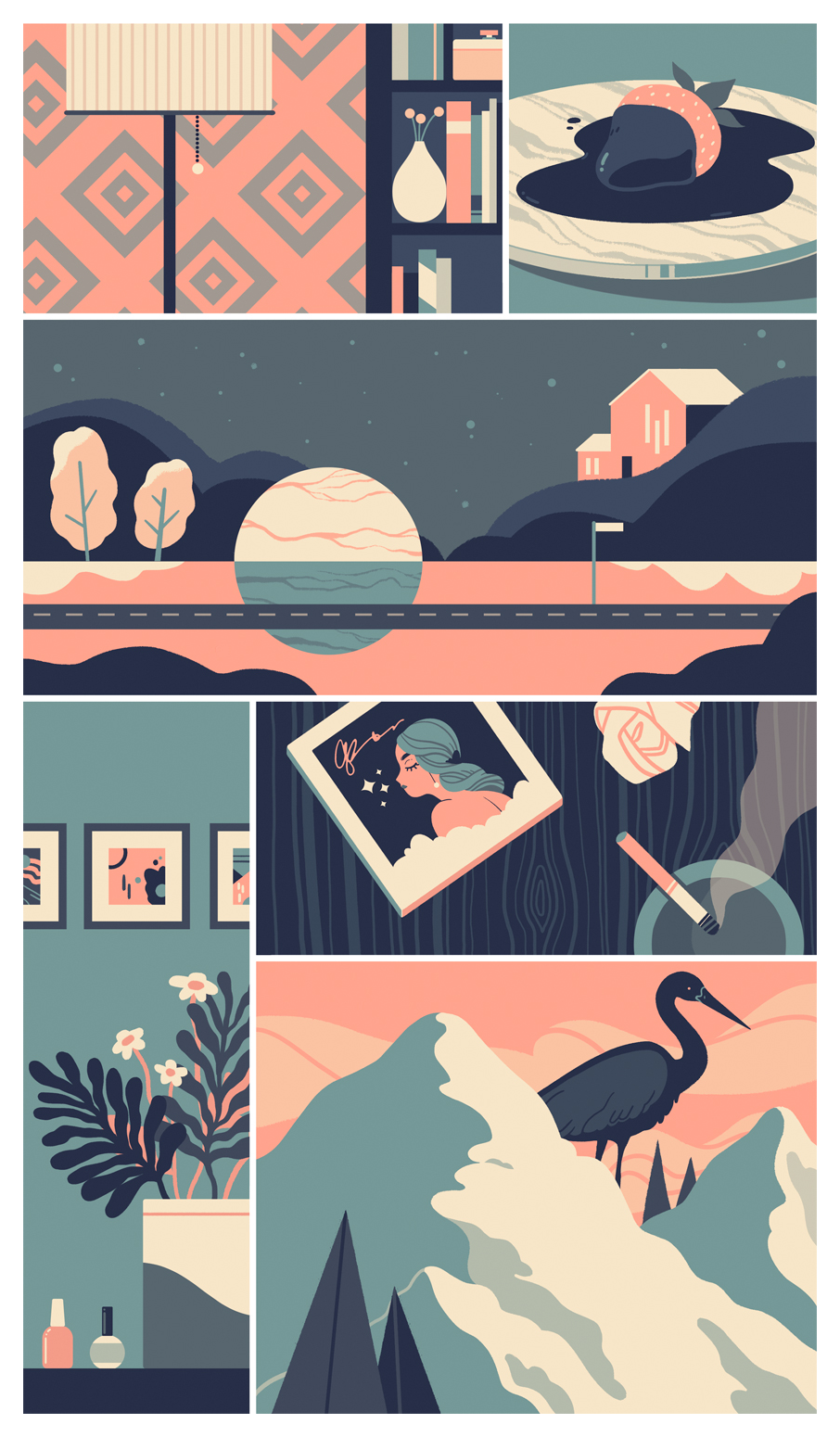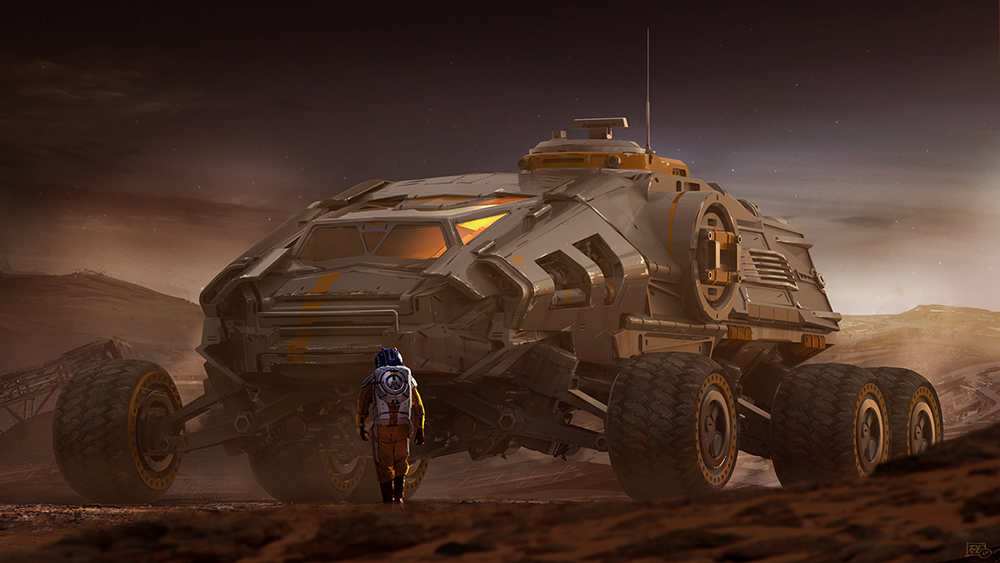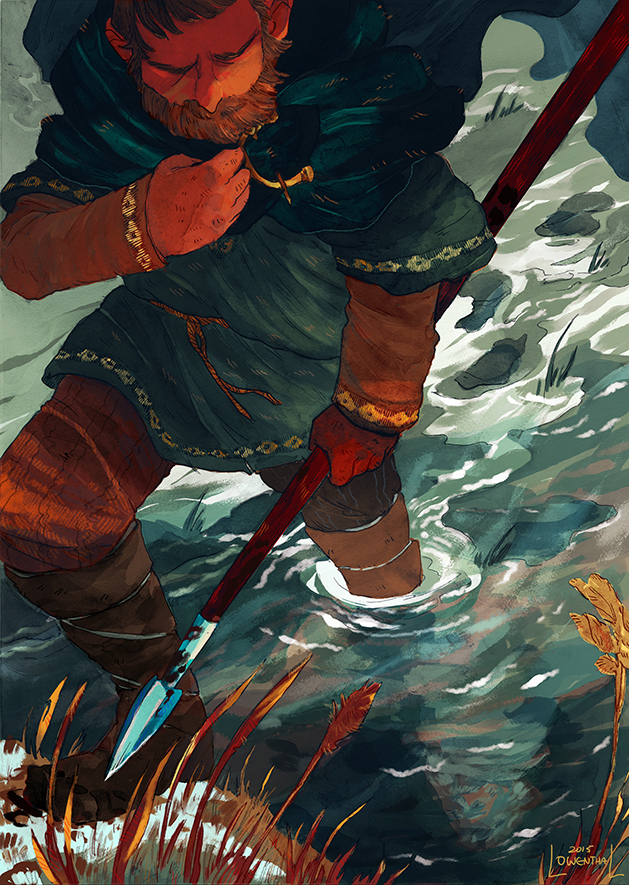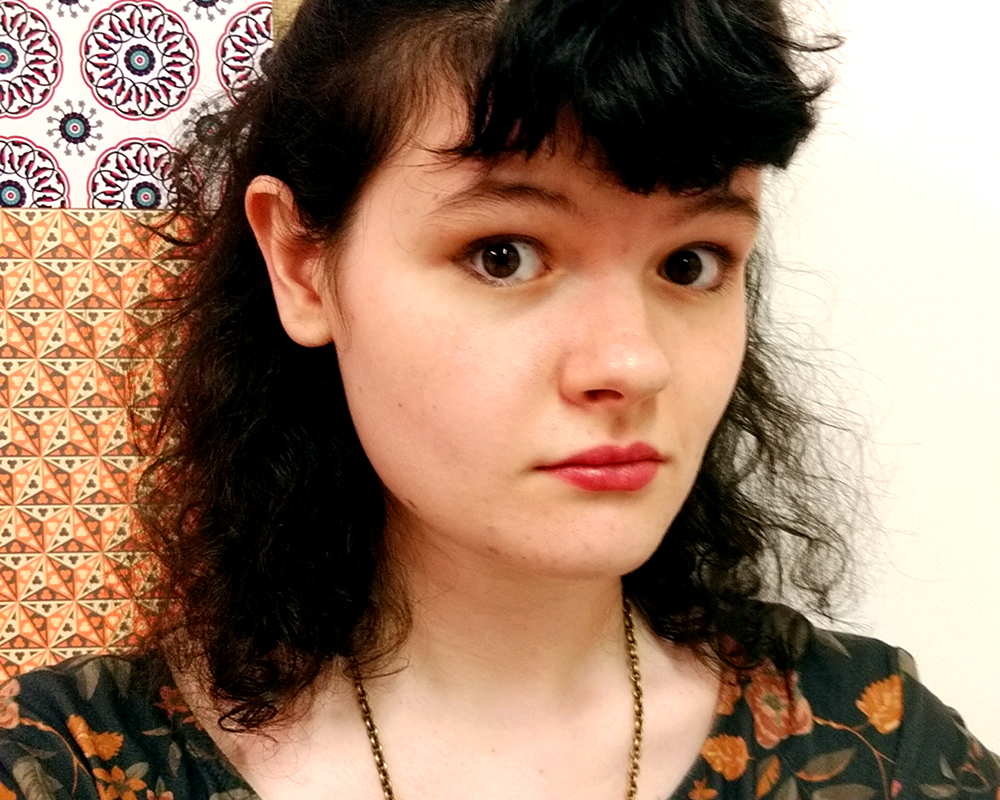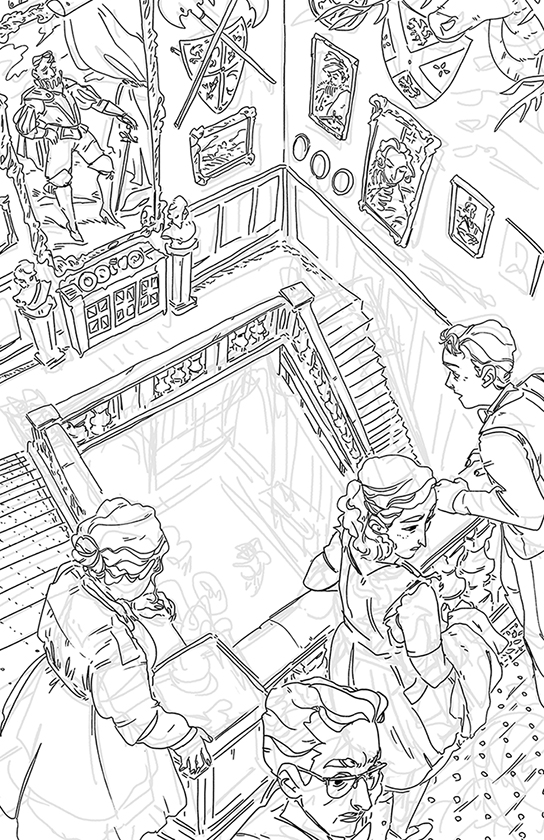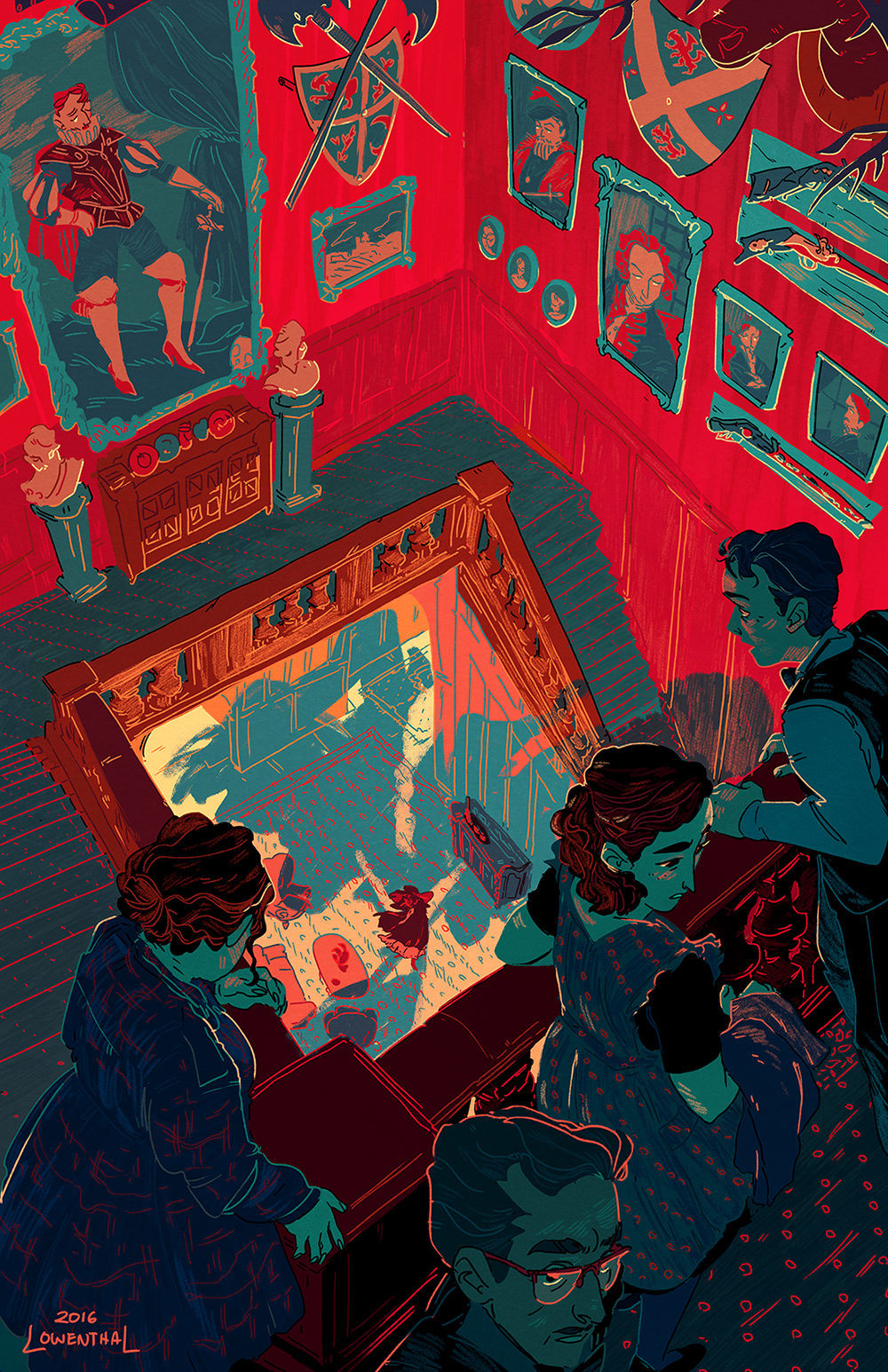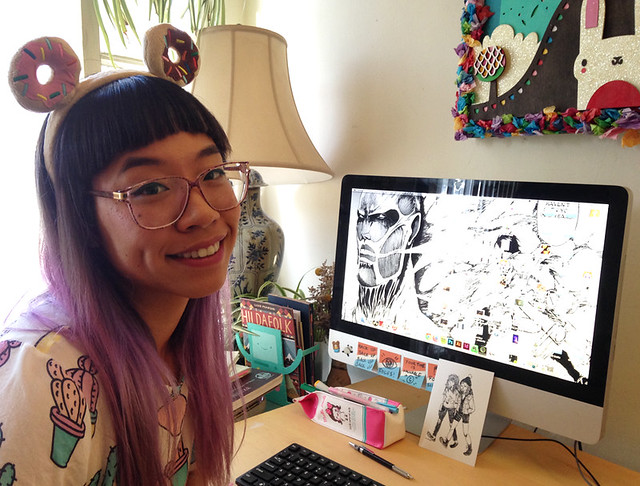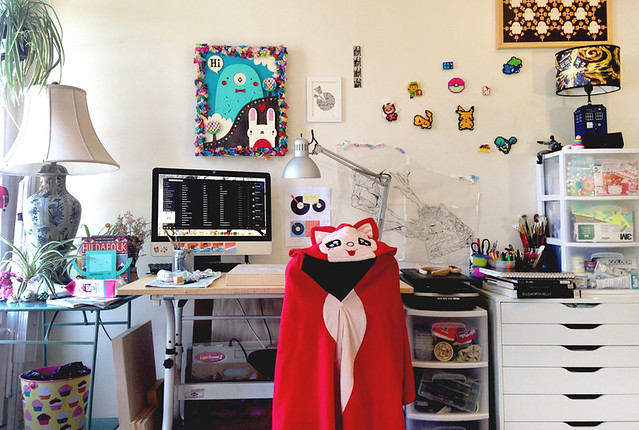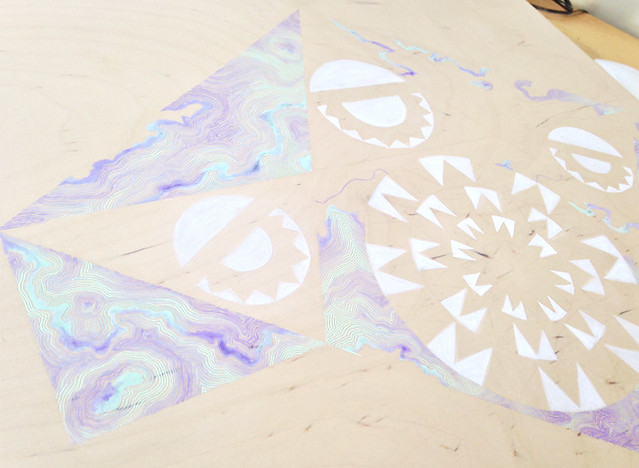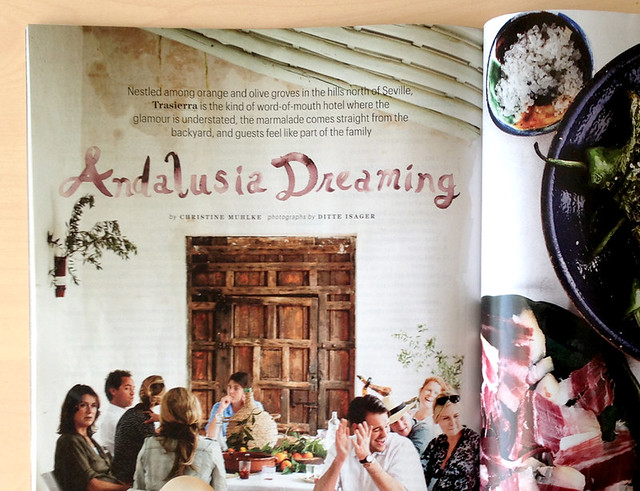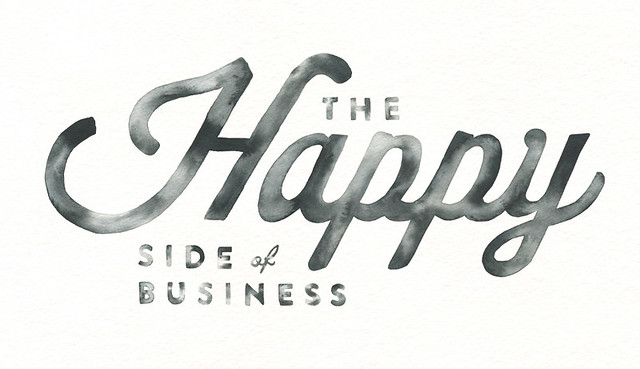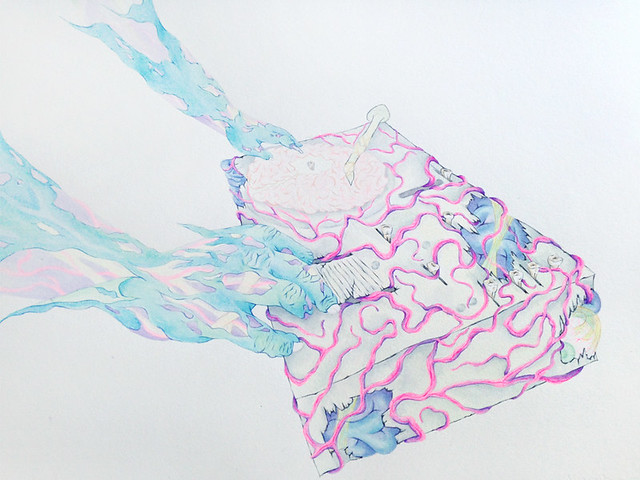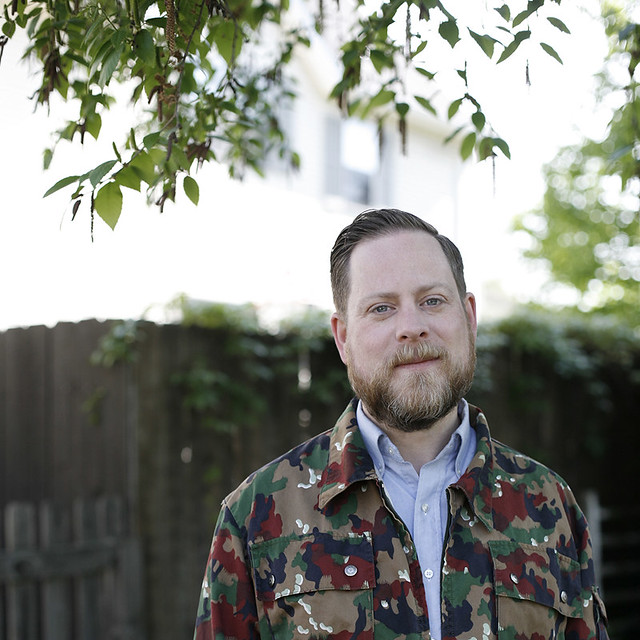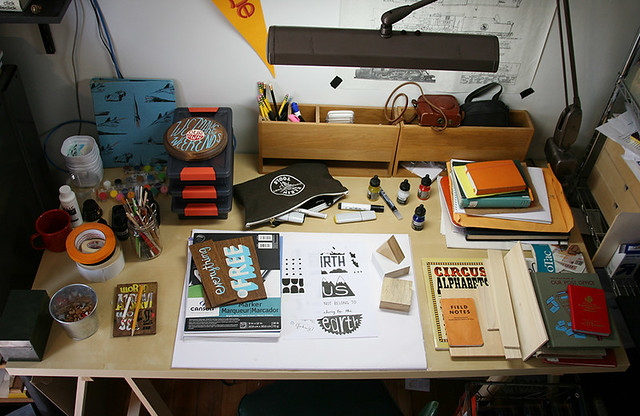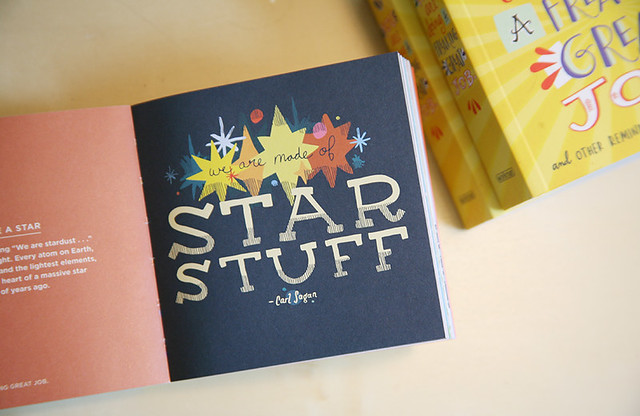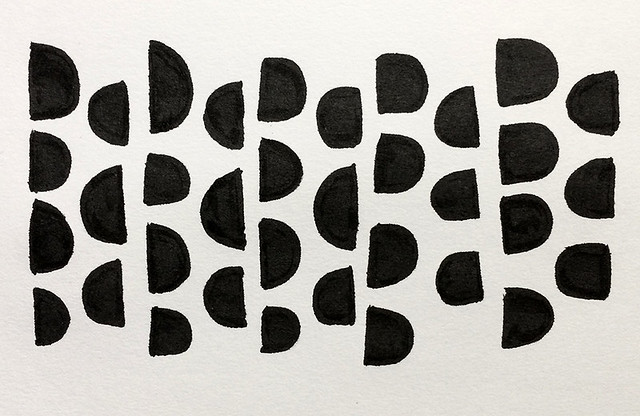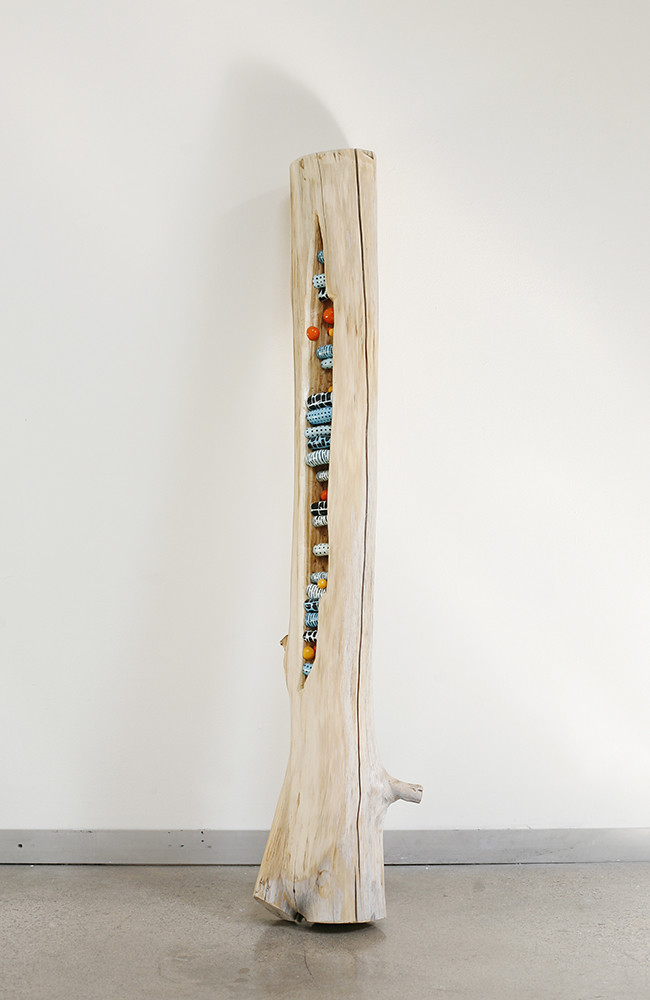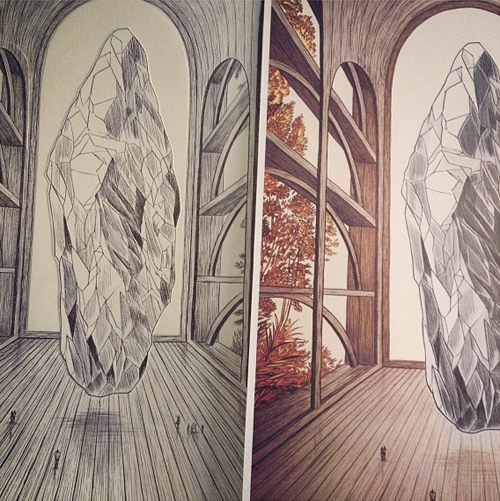Ashley Floréal is a Haitian-Canadian illustrator living in Toronto who graduated from Sheridan College in 2013. Her work has spanned a variety of creative industries, from editorial and children’s illustrations to gallery art, game design and visual development. She draws inspiration from film, music and her own experiences to create work that balances and offsets the deeply personal with the visceral, eerie and fantastical. Check out the interview below to learn more about these influences, and how she creates her work!
Can you describe your creative journey thus far? What was a pivotal moment at the beginning of your creative career?
I’ve been freelancing sporadically since I graduated, but I feel like I’ve been stuck in my creative infancy until very recently. I didn’t have a lot of experience besides high school art classes and my own doodling before art school, and spent my time during and immediately after college trying to get a handle on any medium and find my niche, and only in the last few years do I feel like things have fallen into place and become effortless. [This came] mostly through letting loose, opening up and worrying less about sharing my own experiences and feelings in my art.
I discovered the work of James Jean when I was a teenager, and in perusing his art and digging deeper into other illustrators from there, it occurred to me seriously that there was a way aside from full-time gallery work to make art a career, and that there were a variety of avenues to do that. Album art, cover art, and comics, to name a few. [These are] all things I loved, but had never really considered where the art came from. It seems ridiculous now, but I feel like a lot of non-artists spend a lot of time absorbing art in their day-to-day without putting much thought into the source.
How do you think your environment affected the kind of art you make and the subject matters that you focus on?
I didn’t grow up surrounded by or exposed to much art other than what I worked on in my spare time, and even after exploring more illustration on my own, I rarely saw myself reflected in the work being praised or the art I appreciated. This was an experience I was already used to in my day-to-day life, and rather than challenge it, I assimilated, however subconsciously. The subjects of my work were always societal “defaults” in terms of race, weight, and features, and yet I never questioned it. It didn’t occur to me what I was doing, even in art school — because it fit the status quo — until a classmate vented to me about how much she appreciated that I didn’t “just draw black people all the time”, implying a commitment to representing yourself or your own community was somehow annoying or unappealing. Aside from being a ridiculous thing to say to someone, it got me thinking about why that was the case for me. Since then I’ve made a major shift in trying to center black women and women of color in general in my work, and centering some of my personal experiences or tough-to-work-through emotions. I feel so much more pride in standing behind what I create as a result.
On your site, it mentions that you are inspired by surrealism when exploring ideas about race and identity. Can you talk more about some of the important themes within your work?
I struggled with injecting anything remotely personal into my work for a long time — which is why a lot of my older work is restricted to mock movie-posters. I wasn’t comfortable sharing aspects about myself, so referencing things that inspired me directly was the safest way to communicate “me” through my work. Now, I try to work through personal struggles and issues that resonate with me artistically without shame. Rather than sit down with “I want to draw _____” in mind the way I used to, I tend to think “What does ______ feel like?”, and try to capture that in what is hopefully a more conceptual, evocative way that people can relate to, regardless of whether their own experiences line up perfectly with mine. I have inherently weird interests, so the symbolism I use to get a message or emotion across is often strange and/or grotesque. I’ve always wanted to embrace and highlight the stereotypically ugly by contrasting it with the stereotypically beautiful — [such as] soft, feminine colors or bright, high contrast palettes when working with dark concepts, or contrasting that darkness with florals, gemstones, etc. I’m all about juxtaposition.
What/who are your current inspirations? Books, movies, events, artists, etc. Are there any recent films that have really captured your imagination?
I can’t and won’t pass up any opportunity to talk about Panos Cosmatos’ Mandy from last year. I own the movie and I still must watch the trailer at least once a day for a concentrated hit of the atmosphere and aesthetic of the film that really feels like somebody yanked it out of my personal creative center. It really satisfies the part of me that loves the tug of war between this vibrant neon manic energy and moody, encroaching darkness — something I hope comes through in my work, or at least will going forward.
Film has always been a huge influence on my art; I was able to hear [director] Barry Jenkins speak about his cinematographer James Laxton and colorist Alex Bickel, and the art of lighting black skin with fearlessness - employing rich, dramatic color and never shying away from contrast. I try to keep the way the characters in Moonlight and If Beale Street Could Talk are saturated in mind when I’m picking a palette for a piece that involves figures of color with darker skin tones. Other than that, I’ve also recently rededicated myself to my longtime love of horror fiction and am making a conscious effort to inject creepy and/or crawly into my work.
We love your work for the show! Can you tell us more about the piece you created for the Tasteful Nudes Exhibition?
I approached this piece thinking about specifically two of my favorite classical paintings of all time: “Witches on the Sabbath/Faust’s Vision” and “Balance of the Zodiac” by Luis Ricardo Falero. Specifically, their mythological energy, the feeling of weightlessness, and the way the bodies are intertwined and the poses affectionate. I also looked at a lot of classical religious paintings - the kind with gold embellishments and an intense variety of complex patterns in fabrics and backgrounds - and paired that down to the gold filigree in my final piece.
The original idea was for the painting to be really busy with that kind of varied pattern-work, but in the end I felt like it was important to give the bodies room to breathe and visually speak for themselves. I’ve been working with a lot of bold accent colors lately, so returning to something so soft and neutral was a departure.
One thing that has been really interesting working on this project has been trying to navigate appropriate/inappropriate content, taboos, and our cultural understandings of nudity, sexuality, and humor. It has been incredible to see the responses and focuses of creatives from around the globe. Is there anything specific you learned from this project, or were challenged or liberated by?
For me, personally, I define a ‘tasteful nude’ as one that isn’t explicitly male-gaze or objectifying. From the get-go, I wanted to subvert the often hyper-sexualized depiction of black women with something that had a gentle, sensual energy and was truly all about the women involved. Drawing fuller figures was most definitely a liberating experience and forced me to be made extremely aware of my own biases toward the social “norms” (despite the fact that the figures in this piece look more like me than any others I’ve drawn) and to work at every turn to subvert them. It was shocking how often my hand defaulted to a smaller shape, even as I traced over my own sketches. Depicting only one type or shape of person does both others and myself a disservice, and I want to take that with me in all of my future work.
Can you tell us about any upcoming projects, concepts, or things we can watch for?
I’ve got a backlog of old or half-formed ideas I’m hoping to have the time to revisit and give a chance now that I’m more comfortable in my creative skin. I actually just stumbled upon some unfinished college work where my plan was to take a variety of songs that have clear narratives and retell them sequentially in paintings, without the lyrics as supplement. I’m really interested in storytelling without the use of words to help me paint the picture.
What things are you looking forward to this year?
Aside from hopefully expanding to take on work outside my current repertoire (so many years later, I’m still hungry for covers and album art!), [I’d like to] take the time to experiment with traditional media again. I developed the way I paint digitally based on how I used to work with gouache, and the one time I was able to try my hand at painting traditionally again last year, I couldn’t believe how rusty I was. Ideally, I’ll be able to make it a part of my week to do studies and small paintings I can share on a steady, regular basis.
Ashley is constantly coming up with new amazing work that expresses her unique style. To find more illustrations you can visit her website at ashleyfloreal.com which she updates quarterly. She also posts most frequently on Tumblr (ashleyfloreal.tumblr.com) and is relatively new to Instagram and Twitter so check out @ashleyfloreal (Instagram) and @ashleyfloreal (Twitter) for more amazing content!





















